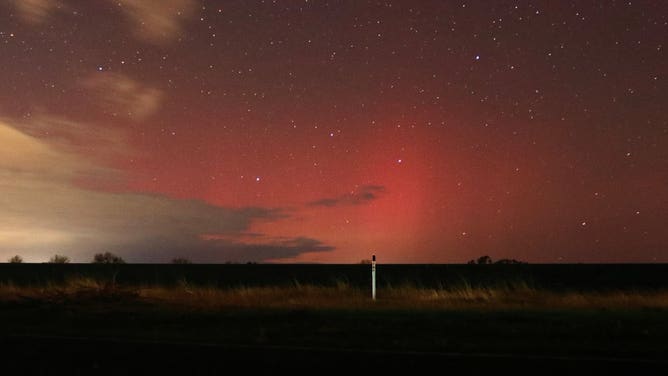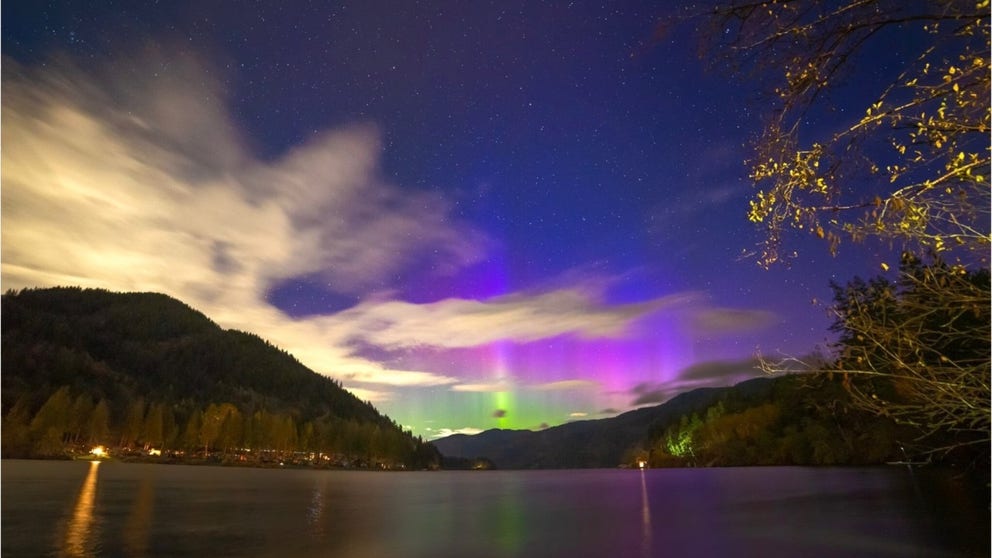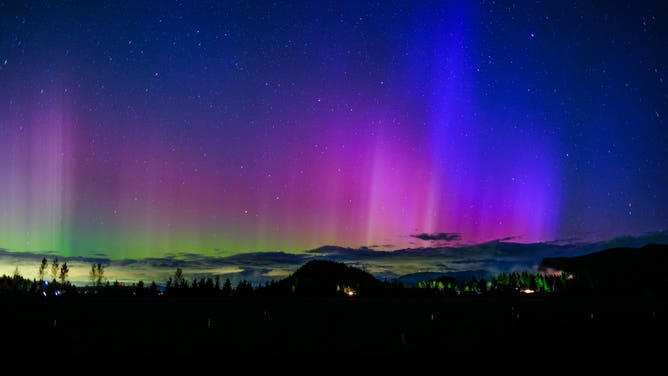Feast your eyes: 'Cannibal' solar flare triggers spectacular Northern Lights show
A solar flare hit the Earth's magnetic field Wednesday and the resulting geomagnetic storm reached a level 3 on NASA's 5 point scale, sparking a brilliant display of the Northern Lights across the northern tier of the U.S.
Northern Lights dazzle across the night skies
Solar flare triggers dazzling display of Northern Lights across northern US.
A predicted strong display of the Northern Lights for last weekend may have fizzled out, but its encore sure didn't disappoint thanks to what space weather researchers are calling a "Cannibal" solar flare.
The flare hit the Earth's magnetic field Wednesday, and the resulting geomagnetic storm reached a level 3 on NASA's 5 point scale, sparking a brilliant display of the Northern Lights across the northern tier of the U.S.
LEARN: These are the 5 categories that measure geomagnetic storms
FOX Weather received reports of bright sightings spread from Washington to Minnesota and Maine, where Northern Lights are more common. Still, this storm was strong enough to extend the display as far south as California and Connecticut.
Hongming Zheng saw the skies glow red with aurora northwest of Lincoln, California.

The aurora lights as seen from northwest Lincoln, California on November 4, 2021. (Image by: Hongming Zheng)
(FOX Weather)
"Cannibal" Solar Flare enhances the display
Vivid Northern Lights displays usually follow a few days after solar events known as coronal mass ejections (CME's) or solar flares. The flares bring a barrage of electrons that interact with oxygen and nitrogen in Earth's magnetic field that surrounds the outside of our planet, creating the colorful glows of the aurora.
Wednesday night's display was triggered but not just by one but two relatively large solar flares, according to Dr. Mark Conde, a physics professor with the University of Alaska Fairbanks. The first flare erupted from the sun on Sunday, while the second one occurred on Monday.
"Most likely, neither would, by themselves, have ejected enough material to produce more than a moderate disturbance at Earth," Conde said. "But in this case, the blast front ejected by the second flare was traveling to Earth faster than the material shot out by the first flare - so it over-ran the expanding front of material from the first flare.
Northern Lights Cannibal CME explained by Dr. Mark Conde
Dr. Mark Conde explains the Northern Lights
He called the scenario a "Cannibal CME" because the second CME from Monday ran into Sunday's "and sort of 'eats' it," Conde said. "The two combined to produce a much bigger effect at Earth than either CME would have done alone."
The combined forces hit the Earth at 1.8 million mph -- nearly triple the speed that solar wind carries CME plasma under calm conditions.
"So, this CME hit FAST!" Conde said.
LEARN: 7 Facts About Northern Lights
And its magnetic field was aligned in such a way to penetrate Earth's magnetic firewall better, allowing charged particles to really energize the aurora, creating bright displays in the north and modest displays farther south.
The solar flare also created a swirling view seen by NOAA satellites above Earth
The major geomagnetic storm has subsided, but increased activity is forecast to linger into Thursday evening and quiet down overnight.
But with the sun starting its journey toward the solar maximum portion of its 11-year sunspot cycle, geomagnetic storms will likely become more common in the next few years.
LEARN: What is the 11-year Solar Cycle
Scientists estimate the peak of the current solar cycle will arrive during the summer of 2025.














